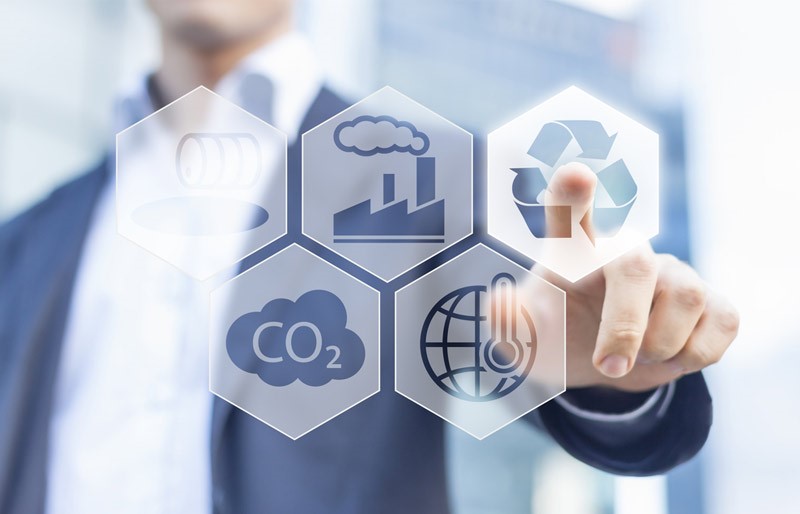No one these days seriously denies the need for sustainable business practices. Even those whose primary focus is business and not the fate of the planet recognize that the viability of the business itself depends on the resources of a healthy ecosystem- freshwater, clean air, robust biodiversity, and the stability of societies. Luckily, most of us care about these things directly. However, collectively we have not been making progress on reducing the damage business does to the world. Admirable companies have launched inspiring initiatives, but the negative impacts of business activity continue to grow.
The problem is simple. It is generally cheaper to buy the product that has a worse impact on its environment than the equivalent product that does less harm. A higher cost to the planet does not translate to a higher price to the customer. Of course, this is because businesses are rarely obliged to pay for the full toll their operations take on the world. Because many of these impacts have been hard to gauge with any precision- or to assign to individual businesses with fairness- their costs have remained external to businesses’ accounting.

But, what if? What if those externalized costs could be quantified and assigned? What if we could get to the point where the lowest-priced T-shirt as also the one doing the least hard to the planet and the society? In that scenario, consumers bargain hunting would align perfectly with business practices that sustain a healthy and just world, and powerful market forces would be put in the service of sustainability goals. This is not a flash of brilliance on our part. It’s what the sustainability theorists have said all along; “true cost accounting “has long been the holy grail of the movement.
The concept of sustainability has evolved across three eras. In the beginning, it was seen as an operational concern, consisting of largely defensive efforts to reduce companies’ environmental footprint and cut waste. That evolved into a more strategic stance- let’s call it sustainability 2.0. the focus shifted from cost reduction to innovation, and initiatives began to consider whole value chains. Now we are in the midst of another overhaul of the concept, in which considerations of impact pervade all decisions making of firms. Instead of asking either “how can we turn a profit?” or “how can we minimize our impact?” managers will see those as two sides of the same coin. Sustainability will simply be how business is done. So what are the trends of sustainability 3.0?
The first one is the recent progress on quantifying ecosystem services- that is, measuring, the value of the myriad beneficial services that natural environments perform. This ranges from the supply of freshwater and clean air to the sequestration of carbon and the production of all manner of raw materials.
Of course, the bounty of nature is priceless. But the unfortunate effect of our seeing these inputs to well-being as incalculable has been that they are treated as free. That mind-set creates problems when resources turn out not to be limitless or indestructible. Failure to price resources also makes it difficult to think clearly about tradeoffs, which many decisions relating to sustainability involve.

“Companies that value and integrate biodiversity and ecosystem services into their strategic plans are best positioned for the future.”
Calculations and accounting like this will pave way for companies to internalize costs they have ignored in the past as externalities. Forward-looking corporations will have the information they need to set priorities and make decisions that reduce and mitigate their impacts.
Just as important as the progress in ecosystem services, valuation in the world of socially responsible investing has made a dynamic shift. Investors now see that companies’ water use, carbon emissions, stance toward labor, and supply chain management practices have a material impact on their valuations. Even as purely qualitative concerns, they have quantitative consequences; managing for greater sustainability can generate cost savings, but it can also identify and eliminate risks, create positive associations with a brand to establish the kind of reputation that attracts consumers. Investors seek companies that have positive environmental, social and governance performance not because they are admirable but because they are viable in the long run. The terminology has shifted from “socially responsible to “sustainable” investing.
A company that resolves to go beyond what local law requires- by paying employees a living wage, for example, or ensuring factories do no undue harm to the rivers systems- is hobbled by costs that its “leaner” counterparts don’t incur. For this reason, many would-be social investors have felt forced between maximizing returns and investing with a conscience. But here, again, the tide is turning. It’s hard for companies to come it ahead at the expense of society if its practices-depleting essential natural resources, for instance- result in a serious disruption to its business in the long term. Even harder if its decisions come back to bite it in a massive lawsuit, which is more likely in an age of rising awareness on sustainability.
The last trend to business sustainability 3.0 is the work underway to draw up what we call the value chain Indices. A value chain index (VCI) provides a way to make comparisons of products based on the impact that accrue to them at each phase of their journey from raw material to consumed, discarded well. A VCI covers a range of categories such as land use, energy, carbon, toxins, and social welfare.
Our present practices must change if we are to lead a sustainable life. It isn’t a question of whether a business will radically transform, but only of when and how. Progress will be faster if we can create a system in which the products that cause the least harm, also have the lowest price tag.
Like most “holy grail” objectives, sustainability as a firm’s most dependable route to financial high performance has seemed beyond reach. Socially responsible investing has matured beyond negative screening to become a value-seeking discipline and a positive impetus for change. And industries are converging on standard indices by which to rate products’ sustainability and seek improvements throughout their value chains. Progress in each area spurs progress in the others, with the result that the long-sought alignment of a firm’s prosperity with the best interests of the planet seems not only possible but inevitable.




